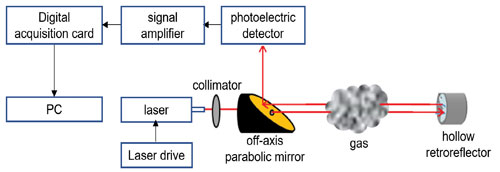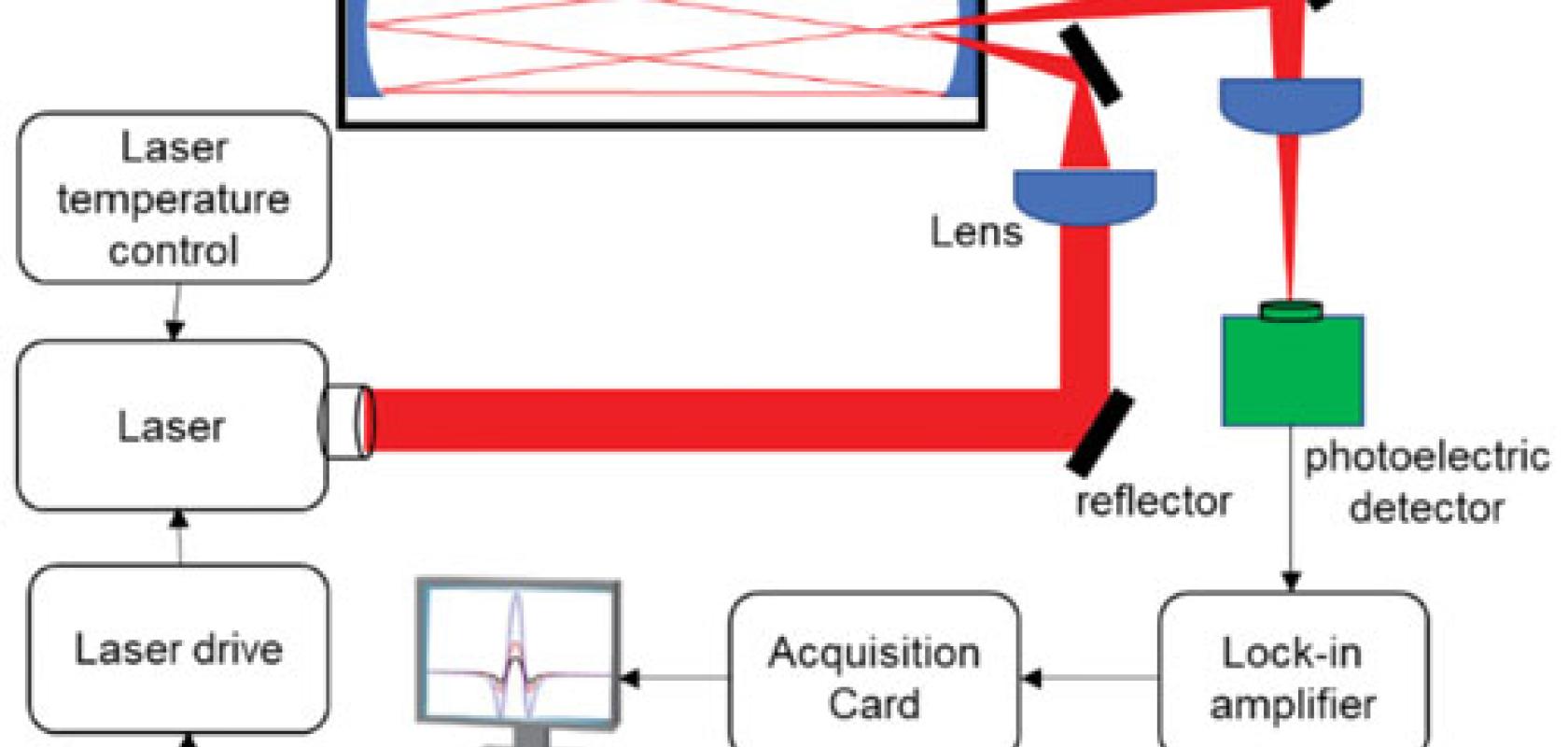Gas emissions are now a primary concern for the welfare of the planet and their accurate measurement is key to effectively managing and minimising them.
There are now plenty of techniques available to measure gas emissions, including chemical techniques such as chemiluminescence and passive diffusion, for example. On the physical measurement side, lasers and spectroscopy systems are regularly used with established techniques including laser absorption spectroscopy, Raman spectroscopy, dual-comb spectroscopy, wavelength modulation spectroscopy, and infrared (IR) spectroscopy readily available.
However, some gas emissions measurement techniques are better suited for different applications. Jeremiah Hashley, a technical writer at Wavelength Electronics, explained: ‘Currently the push is for methane, carbon dioxide, and ammonia gas detection. Whether that is gas concentration measurements in the atmosphere using a Raman spectroscopy lidar system or ammonia and methane emissions from livestock in dairy farms using absorption spectroscopy, there is a need for monitoring gas emissions from a variety of sources for maintaining the health of all living things.’
Each of these techniques brings different advantages to the table in terms of precision, speed, portability and cost. Some systems are now capable of working at the ppm (parts per million), ppb (billion) or even ppt (trillion) scale, which is important for specific applications. Hashley explained: ‘Because ammonia can start to affect livestock and human workers at concentrations as low as 10 to 30ppm, the precision of these devices can greatly enhance gas monitoring in these applications. The size and portability make them easy to place and move around. The real-time analysis of the gas emissions avoids the steps of bringing samples to the lab.’
However, these gas monitoring systems need to be present at the location of the gas source and this presents challenges in terms of size, power, noise and mobility. Hashley said: ‘In order to be in the field, the spectrometer device needs to be compact and mobile to move around for different location measurements. For techniques that require samples to be gathered and taken to a lab, sample bags and tubes for example, precision and accuracy can be affected by human error in transferring and collecting the sample.’ Storage is another concern, where such samples must be treated with significant care and protection. ‘Some chemical methods require frequent calibration and can be expensive for high-precision instruments. Some spectroscopy methods have trouble with ambient conditions due to other particles and humidity in the air,’ Hashley added.
This is where the electronics driving today’s laser spectrometers can help ensure high performance, enabling precise and accurate measurements. Wavelength Electronics’ laser drivers and temperature controllers, for example, provide low noise and stable laser wavelength and temperature (down to 0.0009ºC) for accurate detection readings and precise control. These controllers come in small packages for a compact system while maintaining maximum laser control.
OPLAS or TDLAS
Wavelength Electronics’ latest white paper examines a laser absorption spectrometer for high precision ammonia gas detection in livestock and poultry housing. The paper discusses two different techniques developed by researchers in China: Open path laser absorption spectroscopy (Oplas) and tuneable diode laser absorption spectroscopy (TDLAS). Both of these detection setups provide a theoretical basis and technical support for precision air quality detection and control.
Oplas utilises a retroreflector away from the laser and detector system to return the laser signal. This signal is partially absorbed by any gas in the air between the device and the reflector (about two metres). ‘This absorption will be detected by a photoelectric detector, producing a voltage signal showing an absorption peak. This makes detection of ammonia concentration in open spaces possible. The current of the laser is modulated to help enhance the absorption peak,’ Hashley explained.
TDLAS is very similar to Oplas with one major exception: instead of an open path (air) between the system and the retroreflector, the TDLAS uses a long path gas absorption cell requiring less space. Hashley added: ‘This allows the laser beam to pass 48 times between reflection mirrors before detection. The path length of the laser is increased, improving the sensitivity of the measurement.
‘This method was also modulated and used the harmonic absorption signal from the detection instead of the direct absorption signal to monitor the ammonia concentration. The harmonic signal enables more sensitive and accurate results.’
These two laser absorption spectroscopy systems are capable of detecting low concentrations (five parts per million) of ammonia and other harmful gases in agricultural settings, using Wavelength Electronics’ high performance laser drivers and temperature controllers.
Hashley added: ‘Both techniques show promising and precise results for gas emission monitoring. For space constraints, the TDLAS with the absorption cell might be necessary. The Oplas may prove to be a simpler design and can avoid issues of gas absorption cells.’
In its exclusive white paper, Wavelength Electronics provides further details into these leading detection methods and how they can improve the health and safety of both livestock and workers.

Principle block diagram of open path laser absorption spectroscopy detection method for harmful gases in livestock and poultry houses
Future emissions
But these are just two examples of gas emissions spectroscopy and Wavelength Electronics expects more innovations in the near future. Quantum Cascade Laser (QCL) spectroscopy, for example, is one such emerging trend. These systems are composed of dozens of alternating layers of semiconductor material, forming quantum energy wells that confine the electrons to particular energy states.
The output wavelength is determined by the structure of the layers rather than the lasing material, and that means device fabricators can tailor the wavelength in a way that can’t be achieved with diode lasers.
Hashley added that ‘more QCL spectroscopy in the IR range’ is likely in the future as well as ‘more commercially available QCLs at range of 3 to 13µm.’
The drive for miniaturisation and improved sensitivity will also continue with today’s laser spectroscopy systems.
Hashley concluded: ‘We will also see better sensitivity (parts-per-trillion and beyond) and more user-friendly systems that do not require advanced training or degrees to operate. Most likely hand-held devices will continue to advance in capabilities and effectiveness.’
For more information on this topic please click here to download a White Paper.


